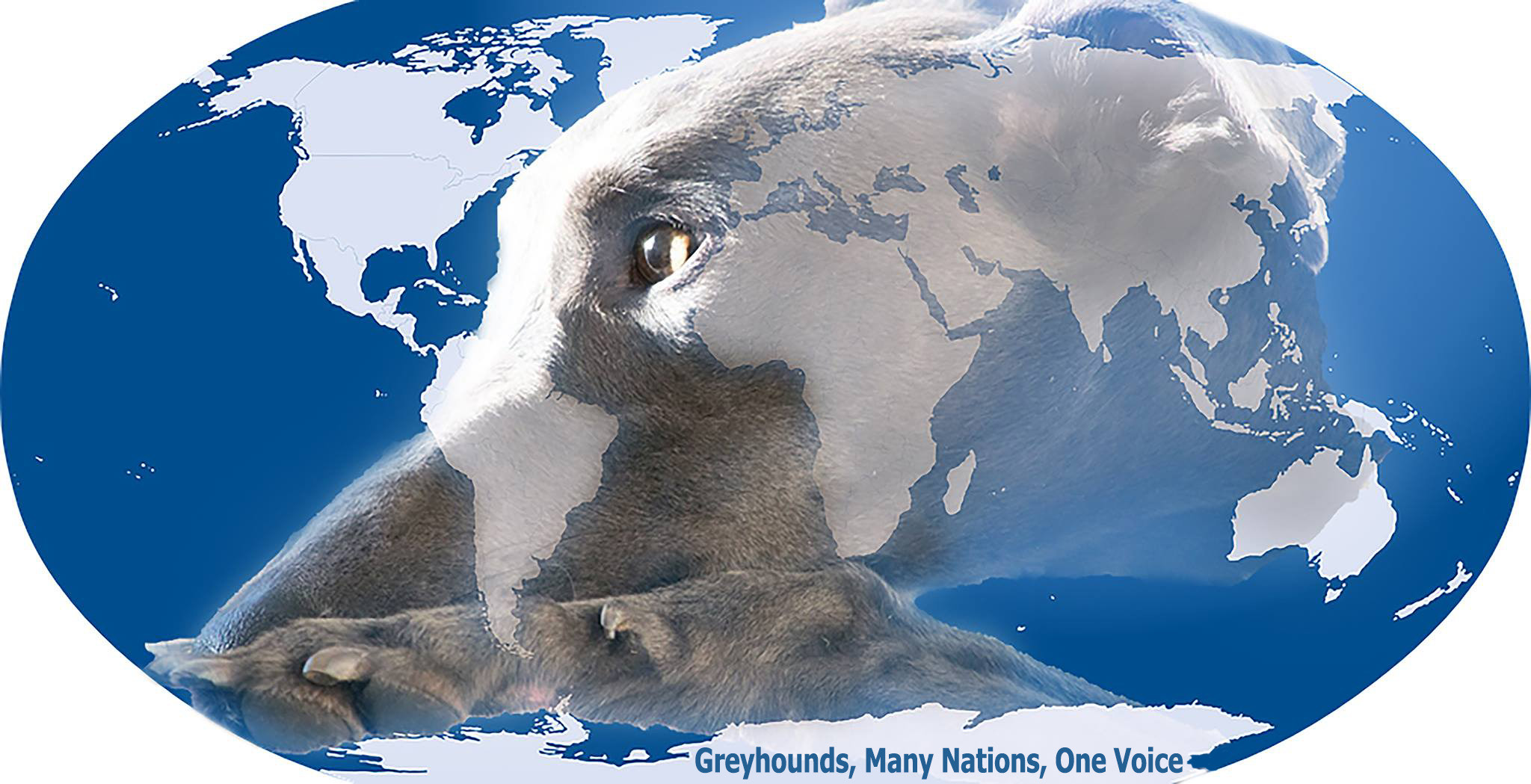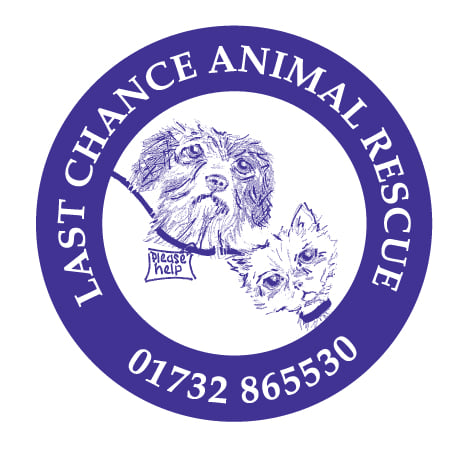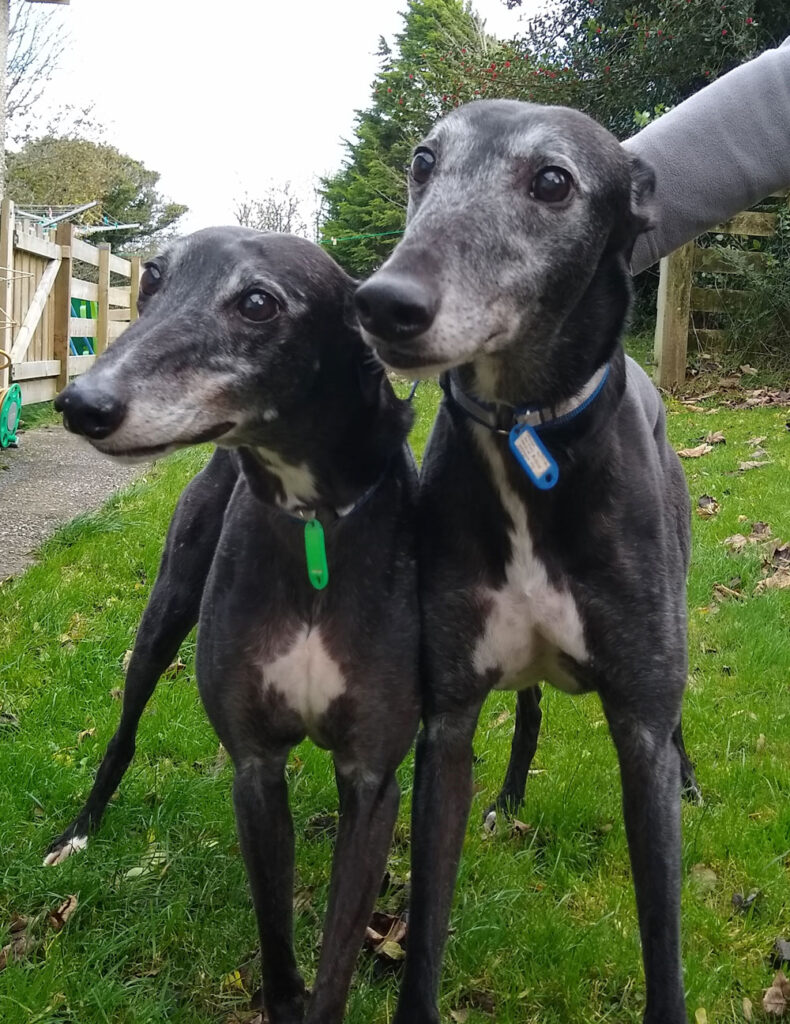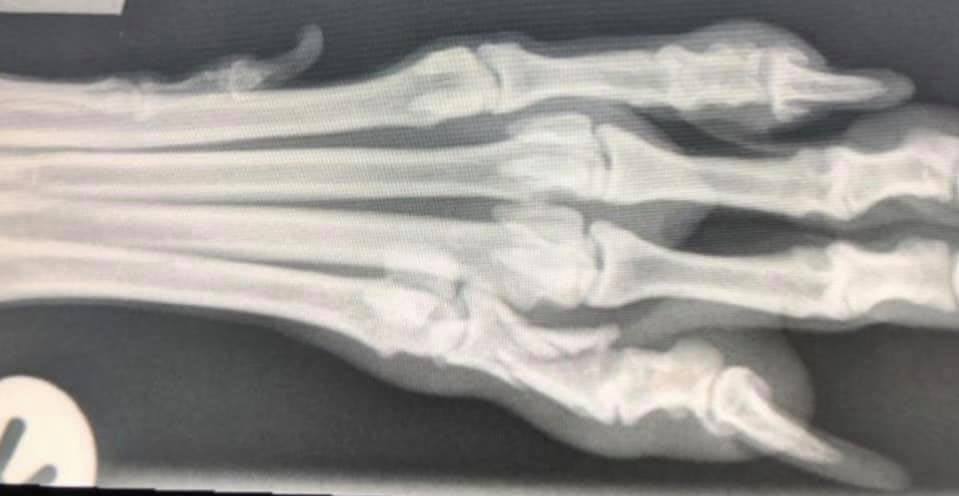Facebook: greyt.exploitations Website www.greytexploitations.com Email info@greytexploitations.com Tel: 07958729798
|
|
| Greyt Exploitations was founded in 2008 and campaigns for stronger protection laws and for the gambling on dogs to be outlawed in Britain. We do this by raising the public’s awareness of the cruel and inhumane treatment of greyhounds in the UK and much of our research and investigation work has been published in the national press. | |
| Facebook: StopOwlertongreyhoundracing | |
| Owlerton Greyhound Racing (SOGR) are a Sheffield based anti Greyhound racing group protesting and campaigning for a phased ban on Greyhound racing. | |
| Facebook: GreyhoundAwarenessCork | |
| Greyhound Awareness Cork was set up to help improve the plight of Irish Greyhounds through highlighting issues & information. Many of them are used, abused, neglected and raced to death. We also arrange & attend protests. Up to 83% of the greyhounds racing in the UK are born in Ireland | |
| Facebook: antiracingkent | |
| ARK was founded in 2017 as an antiracing group based in Kent focussed on raising awareness about the plight of racing greyhounds and campaigning for an end to greyhound racing in Kent, the UK and worldwide. We have organised regular antiracing protests outside the main tracks in Kent as well as holding awareness raising stalls at greyhound charity events, and support the work of other UK groups aiming to end the cruelty of greyhound racing in the UK. | |
 |
Facebook: GMNOV group |
Greyhounds, Many Nations, One Voice was founded in 2016 by a greyhound adopter who volunteers in greyhound rescue and campaigns against greyhound racing in the UK and Ireland. It is an international social media group with members from over 60 countries, that highlights the cruelty in greyhound racing, promotes greyhounds as pets, supports rescues and campaigns to ban greyhound racing worldwide. |
|
Author: AAGR
Groups that support AAGR
UK
Animal Aid
Animal Welfare Party
The League Against Cruel Sports
Shut Down Belle Vue
OneKind
Shutdown Towcester racecourse
SAGE – Scotland Against Greyhound Exploitation
Kay, Dowager Duchess of Hamilton, ARA
Stop Swindon Greyhound Racing.
Birmingham Against Greyhound Racing
G.A.I.N – Greyhound Action in Nottingham
Doncaster Against Greyhound Racing
INTERNATIONAL:
Pet Levrieri ANIMA Macau
GREY2K USA Worldwide
Protectora y Santuario Scooby, Spain
Busselton Greyhound Awareness
Free the Hounds (Australia)
Projecto Galgo Argentina
Galgo Libre Uruguay
Galgo Libre Chile
Rescues





Eddie’s story

Eddie raced 59 times at Newcastle track and won his first race at only 20 months old. He was callously discarded and dumped into a rescue by his trainer at exactly 3 years old, where he languished for a further 5 months. Eddie was severely underweight when he was rescued, his skin was so dry it resembled fish scales and he suffered from bad hair loss all over his body. His upper and lower incisor and canine teeth were ground down to stumps – presumably from chewing on his kennel bars – and his molars and premolars were covered in thick tartar which had to be removed under general anaesthetic. His body was covered in scars, his legs being particularly bad, but his neck is also scarred along with a deep circular scar on his shoulder. He also has muzzle scarring on his face.
When Eddie was taken to the vet the day after he was rescued, his family were told that the wide, four inch long scar on his chest had never been stitched but should have been. Eddie weighed in at 24.5kg and had to gain 7 kilos, slowly, to reach his minimum weight. He is now a healthy 36.5kg. Eddie’s body has healed but by far his biggest problems have been in his mind. After 4 years in a loving home he is still too frightened to go for a walk in the big wide world and many everyday household noises still scare him. He is a creature of habit and has many foibles which his family have grown used to. The first few weeks after rescue were extremely hard for them all and for the other dog who lived in the house, but there was never any question of him being sent back.
Racing severely damages these dogs and Eddie is, unfortunately, one of thousands…
GFP, Scotland
Daisy’s Story
Aged just 2 years old, this girl was dumped on an independent rescue as she was no longer of use to the trainer who raced her at Shawfield track. She suffered from severe anxiety and behavioural problems and her small body was covered in multiple confirmed cigarette burns and scars. Shortly after rescue she was diagnosed with severe cervical spondylosis, chronic back pain and myoclonic epilepsy. Her injuries were thought to be due to trauma received during her short ‘career’. She required daily painkillers, anti-epilepsy drugs and medication to control her anxiety and received regular physiotherapy and behavioural therapy.
The cervical spondylosis worsened over time and this had an impact on the nerve supply to her forelegs. Her pain levels and coordination problems were increasing and in April 2020 this resulted in an emergency admission to the vets. It was discovered shortly afterwards that she had developed osteosarcoma in her humerus. Due to her neck injury, amputation was not a viable option, so she was sent home to make the most of her final months. Her condition worsened rapidly, and it was also discovered that she had a tumour in her lumbar spine. She passed away peacefully with her family in July 2020, just days after her 7th birthday.
We are thankful she found her forever home where she was valued and loved and not seen as a commodity. She was a very much loved little girl by everyone who knew her.
She is one of the many reasons our group will continue to campaign to end Greyhound racing.
Ms E.R, Scotland
Endless thousands of greyhounds have suffered the consequences of greyhound racing since it began 94 years ago. They continue to do so despite the industry’s now desperate attempts to sanitise its existence.
In 1959 I took employment in a trainer’s kennels and witnessed the insensitivity and suffering involved, including dogs often permanently muzzled as a solution to stressed behaviour caused by the conditions and lifestyle they were obliged to endure. No provision was made when injury, loss of speed or unsuitability for purpose ended their usefulness. The common instruction of owners to trainers was: “Give it away or have it put down.” I was taken aback.
Naively, I began advertising for homes, hoping they could then experience some kindness and comfort. I was swiftly instructed by the industry’s ruling body, the National Greyhound Racing Club (nowadays Greyhound Board of Great Britain) to stop immediately. I was told it made it look bad for greyhound racing, presumably because it made it publicly known that the discarded dogs were not provided for, but I discovered a darker side: it was quicker and more profitable to channel them into vivisection laboratories.
The callous instruction was ignored. Owners were always keen to offload their responsibility and glad if a home was found. Only a tiny minority of owners adopted their dogs themselves. Sadly, the need for homes exceeded the supply and as trainers wanted kennel spaces for new stock, I was still regularly required by my employer to despatch surplus discarded dogs by rail to an individual in Norfolk. I was told that he also found homes.
In order to home more dogs myself, I had begun advertising nationwide and contacted the British Union for the Abolition of Vivisection (BUAV) for the help of the experienced volunteers of its Derek Roy Homefinding Scheme for Greyhounds to check the responses for suitability. I asked them to also investigate the Norfolk individual who apparently could take any number of dogs. Responsible homefinding takes time, so he aroused suspicion. In fact, he supplied the dogs to vivisection laboratories. The trainers had lied. When confronted, it emerged that they knew of the dogs’ real fate. “At least they’re doing something useful” was their excuse.
Between 1959 and 1974 I was fortunate to build up a nationwide network of volunteer helpers and worked in association with the BUAV. Understandably, in response to pressure from its supporters who wished their donations to be used towards finding alternatives to vivisection, the BUAV eventually approached the NGRC and embarrassed it to address its own responsibility for the greyhounds. Having opposed advertising for homes for 15 years, the NGRC then had the audacity to ask for my list of contacts to form its Retired Greyhound Trust. Other homefinders, by then attached to various tracks, were also incorporated and required to cough up all monies raised, but fundings subsequently issued towards their homefinding expenses were virtually non-existent.
Eventually a £5 fee was added to the NGRC’s registration charge, similar to the so-called ground-breaking strategy recently employed by the GBGB, with most likely the same inadequate and worrying outcome. Many owners baulked at the imposition, then demanded or expected immediate homes for their retired dogs. This was rarely possible. The best that could be offered was that owners should advertise personally for homes, then contact RGT homing groups to check responses for suitability. Many did not bother with that time-consuming and possibly disappointing refinement, so dogs were off-loaded uncaringly. No records were requested.
Dogs could still be channelled into laboratories or abandoned with their earflap tattoos cut off to avoid traceability, so I asked the NGRC to require owners and trainers to provide details of their dogs’ destinations when their track careers ended. The request was not welcomed and, apart from RGT adoption forms eventually provided, the whereabouts of most discarded dogs remained unrecorded until more recent times when the industry has finally had to comply due to pressure by concerned animal welfare organisations. Even so, figures do not tally and concerns remain.
There are many skeletons in the greyhound industry’s cupboard, not least those of the discarded tools of its trade. A layered mass grave area of thousands of discarded racers was discovered by the Sunday Times in 2006. Low grade racers exported to appalling conditions in Spain, whose suffering the industry ignored for years, are just two examples.
Proof exists of the history outlined so denial is inappropriate and pointless.
Public exposure of the greyhound industry’s welfare failures prompted a balanced Parliamentary enquiry by APGAW in 2006. Fourteen years later its recommendations of a broadened regulatory body and compulsory contributions towards welfare by bookmakers remain unobserved. DEFRA fails its named responsibility for welfare by permitting it to be so.
Under the industry’s continued self-regulation, the dogs remain vulnerable and continue to suffer.
The GBGB states that stewards’ inspections are made twice yearly. The sad condition of dogs in a trainer’s kennels, as reported in the GBGB Calendar of 14th February 2020, indicated longer term neglect than six months. His welfare failures would, therefore, have been evident and should have been noticed much sooner if all stewards were competent and honoured their welfare responsibility. Retribution after the event is too late: the dogs have already suffered by then.
Without a broadened regulatory body, as recommended by APGAW and which could make proper care and conditions compulsory, the GBGB’s recently issued Code of Practice will continue to be ignored by the many trainers who favour their own traditional insensitive practices, including permanent muzzling as a solution to stressed behaviour. The more compassionate measures recommended are considered too time-consuming and unnecessary. The Animal Welfare Act 2006 is contravened and stewards apparently turn a blind eye unless of a conscientious nature.
The GBGB recently stated the figure of 16,800 greyhounds in registered trainers’ kennels. Others have already been born to follow in their footsteps. More are being bred. They all remain vulnerable despite the GBGB’s claim of Commitment to Welfare.
The GBGB’s claim of 90% homing is misleading. It does not cover unregistered dogs, even though they are all part of the industry’s production line and, dogs stockpiled in trainers’ kennels cannot fairly be classed as homed in the recognised sense of the word. There is no real quality of life and saturation point will quickly be reached, as homing groups already struggle to cope with the number needing help. What then?
The solution of ‘bolt gun and bury’ can provably be surreptitious and need not be declared as euthanasia which the industry is now committed to minimise. Research laboratories have also long been a favoured disposal channel. In due course, it will not be out of place to investigate.
Meanwhile, the coordinator of the recently launched GBGB’s Greyhound Retirement Scheme plans to harvest the services of other homing groups in addition to Greyhound Trust groups, thus depriving abandoned dogs and cruelty cases of their chance of a safe haven until lovingly homed. They often arrive as a result of careless homing. The suggestions that the industry should instead use approved and licenced boarding kennels nationwide for dogs on the waiting list for homes, financed from bookmakers’ bulging pockets, have so far been ignored, yet it would also advantageously provide opportunity for the greyhounds to socialise and other customers might often pursue the idea of adopting one.
Despite everyone’s efforts for whatever reason (cosmetic image or genuine compassion) the need for homes far exceeds the supply, even given the services of concerned volunteers and those who are opposed to greyhound racing. The latter are vilified by the industry, yet blatantly used to its own advantage, including many members of the public on whom the industry prevails to provide homes. Unwittingly, they protect its image by doing so.
It cannot be an offence to be opposed to greyhound racing. It is an offence to contravene the Animal Welfare Act 2006.
Covid 19 has already proved that life can well go on without live greyhound racing, plus: it can be replaced by virtual greyhound racing to raise equal revenue and accommodate people’s gambling requirements without causing endless more thousands of greyhounds to suffer.
Live greyhound racing is a disgraceful 94 year old chapter in our history. On humane grounds, may it never make it to a hundred years.
Sincerely
Ann Shannon October 2020

Injuries + Death


According to the Animal Welfare Act 2006: Section 9.
Duty of person responsible for animal to ensure welfare
2. (e) its need to be protected from pain, suffering, injury and disease.
“Greyhound racing is inherently dangerous. Greyhounds race at high speeds in conditions which make injuries almost inevitable.”
(Hansen 2017)
Every year in the UK there are just under 5,000 injuries recorded, resulting in the unnecessary deaths of hundreds of greyhounds with treatable injuries.
|
2017 |
2018 |
2019 |
Injuries |
4,837 |
4,963 |
4,970 |
|
|
|
|
Greyhounds with injuries killed trackside |
257 |
242 |
207 |
Greyhounds killed as trainers/owners did not want to pay treatment cost |
370 |
175 |
123 |
Greyhounds with injuries killed for poor prognosis, away from track |
144 |
142 |
|
|
|
|
|
Total Killed for injuries |
627 |
561 |
472 |
For over 40 years there have been many studies into racing greyhound injuries highlighting the damage the simple act of racing does to the bodies of greyhounds.
Drugging
The greyhound racing industry has a long and extensive history of animal welfare abuse related to the use of banned substances and illegal drugs. These include a range of drugs and banned substances that have been identified regularly in test samples- e.g. of hair and urine – taken from dogs involved in racing. These tests being performed are part of the racing industry’s own attempts to reassure the betting public of the integrity of racing, by trying to promote it as fair and above board.
But is it actually fair and above board on the greyhounds used within this commercial industry, when we look at their experiences involving drugs in a commercial industry?
How do greyhounds ingest drugs?
Firstly we need to understand that performance enhancing drugs are used to affect the track performance of a dog, and this includes a class A substance, cocaine.
Cocaine is a performance enhancing drug. Its known effects on dogs include increased heart rate, more blood pumped to the heart and lungs, and increased action / speed. It is also an illegal Class A drug and there are usually legal consequences for those people found with it, using it or supplying it in wider society.
We know from the independent press and TV exposures
https://www.gq-magazine.co.uk/sport/article/greyhounds-cocaine
that racing greyhounds have been given cocaine along with other drugs used to affect performance, with the aim of ‘rigging the betting’ or put simply, cheating.
Poor welfare
Racing Greyhounds in Hot Weather
Heat related illnesses occur when the body’s cooling mechanisms are overwhelmed, causing the body temperature to reach a level that disturbs the normal cell function. This results in the release of chemical and toxins from cells, damaging organs (especially the brain, heart and kidneys), and can result in death.
The body’s cooling mechanisms can be challenged in two ways, exposure to a high environmental temperature (hot weather or hot car) or when the body accumulates heat due to strenuous exercise, known as exertional hyperthermia or exertional heat stroke [1].
In June 2020, a study into pet dogs admitted to veterinary practices in the UK for heat related illness, showed that greyhounds were the 5th most common breed admitted, four times more likely than most breeds[2]. This is because greyhounds, even though they have little fat and a thin coat, have high lean muscle mass – 60% of their bodyweight [3], and muscle produces heat when active (have you ever felt the warmth coming off greyhounds at rest?).
Greyhounds following even short periods of strenuous exercise, commonly exhibit significant symptoms of exertional hyperthermia, such as cramps and fatigue [4], as greyhounds expend almost as much energy in the first 7.5 s of a race as in the subsequent 22 s [5].
A high body temperature, either from exercise or the environment, and strenuous exercise alone all cause muscle fibres to break down (rhabdomyolysis) which causes the rapid release of chemical from the muscle cells as well as myoglobin, a protein that damages the kidney as it is cleared from the body, potentially resulting in acute kidney failure and death [6].
Disappearing dogs
The greyhound racing industry seeks to hide the truth about the numbers of dogs bred and numbers of dogs homed once the industry has finished with its victims.
Overbreeding
As far as the GBGB are concerned, only registered dogs can race on their tracks. Registration is merely a case of noting microchip and other dog recognition details – no interest is given to where the dog came from. Thus, the breeding part of the business conveniently falls outside their “self regulatory” scope. This stance is useful for a variety of reasons, chiefly that the breeding of racing greyhounds is a very competitive business with a high “wastage” rate, as the industry terms it. For many years, those opposed to greyhound racing have claimed that around one third of the greyhounds bred for racing are killed annually, by analysing and comparing publicly available breeding and racing information.
Though the lack of GBGB governance is pitiful, the majority of dogs racing on regulated tracks in the UK are actually from Ireland, where the racing industry is regulated by a government mandated body – The Irish Greyhound Board (Bord na gCon), and the breeding is regulated “at arms length” by a separate entity, the Irish Coursing Club, all of which is set up under a variety of laws. This separation of concerns again obfuscates the relationship between the number of dogs bred and the number that make it to the track.
In 2019, the television program RTE Investigates aired a programme based on information from an internal report commissioned by the Irish Greyhound Board that had been suppressed due to its damning conclusions regarding welfare, in particular the fact that 6,000 greyhounds are killed annually. The redacted report published by the IGB in response to the programme is available here. One of the interesting conclusions was that the IGB is not a racing orientated business, but a breeding orientated business.
Imports
According to an independent Preferred Results Ltd report commissioned by Greyhound Racing Ireland in 2017, over 83% of the racing greyhound pool in the UK originates in Ireland.
The report also states that racing greyhounds ‘are exported to the UK, for prices that are less than 50% of their actual production cost’
https://www.grireland.ie/globalassets/talking-dogs/pr/preferred-results—igb-organisation-restructuring-report—pages-1—65-compressed.pdf.
However a more recent article published in Greyhound Star on 10th July 2020 states that ‘around 90% of UK racers are Irish bred.’ According to the same article, the ‘total number of matings (in Ireland) for the first six months of the year’ has dropped ‘to 1,195 from 1,588’. That represents a 30.4% decline with no immediate likelihood of an upturn.’
http://greyhoundstar.co.uk/greyhound-breeding-freefall/
The Irish greyhound racing industry’s reputation in relation to the doping of greyhounds is well established. Greyhounds in Ireland have tested positive for cocaine, barbiturates, ketamine, Viagra, cannabis, beta-blockers, Ritalin, and morphine – to name just a tiny number of the substances found.
